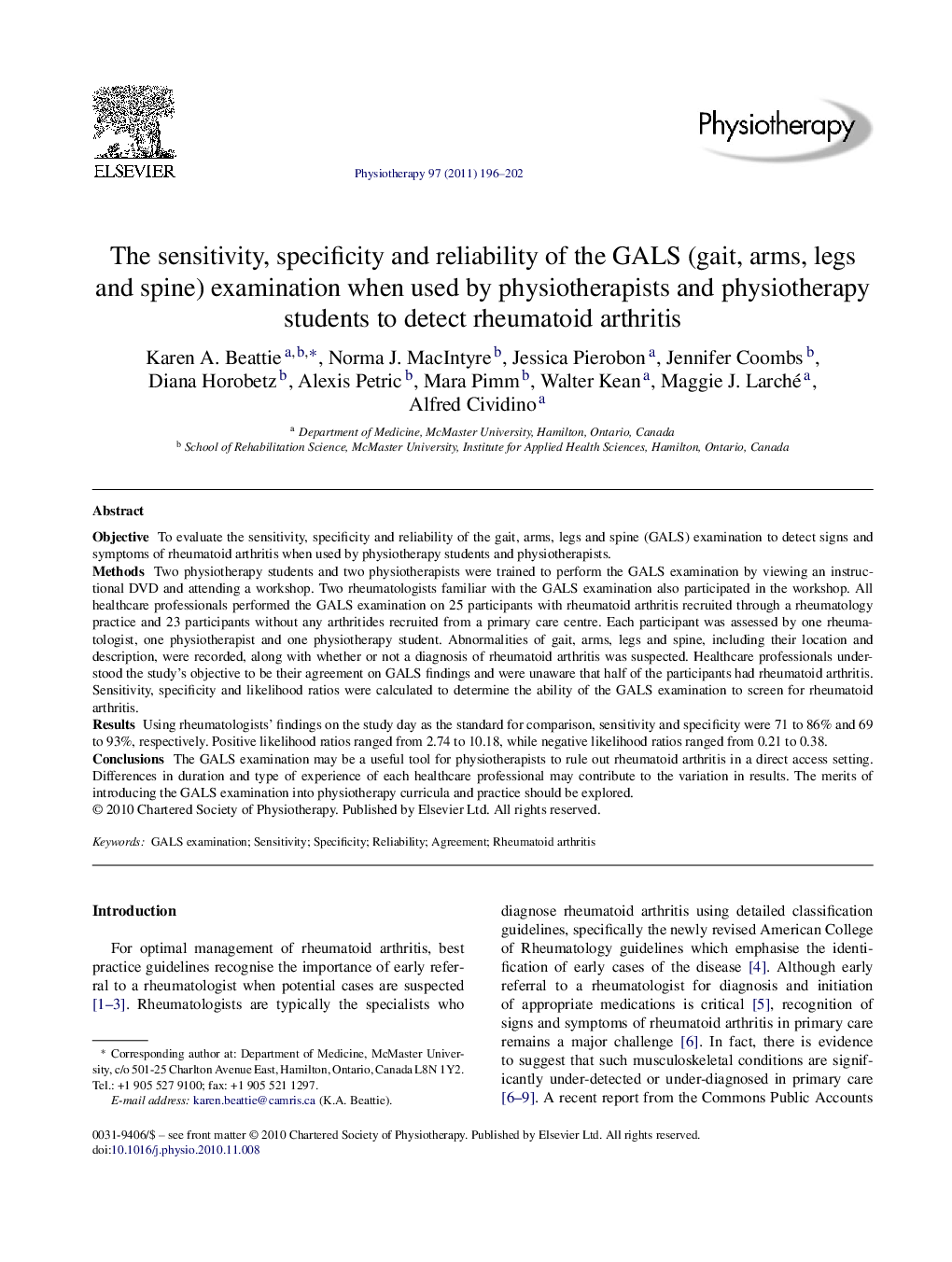| کد مقاله | کد نشریه | سال انتشار | مقاله انگلیسی | نسخه تمام متن |
|---|---|---|---|---|
| 2627465 | 1136078 | 2011 | 7 صفحه PDF | دانلود رایگان |

ObjectiveTo evaluate the sensitivity, specificity and reliability of the gait, arms, legs and spine (GALS) examination to detect signs and symptoms of rheumatoid arthritis when used by physiotherapy students and physiotherapists.MethodsTwo physiotherapy students and two physiotherapists were trained to perform the GALS examination by viewing an instructional DVD and attending a workshop. Two rheumatologists familiar with the GALS examination also participated in the workshop. All healthcare professionals performed the GALS examination on 25 participants with rheumatoid arthritis recruited through a rheumatology practice and 23 participants without any arthritides recruited from a primary care centre. Each participant was assessed by one rheumatologist, one physiotherapist and one physiotherapy student. Abnormalities of gait, arms, legs and spine, including their location and description, were recorded, along with whether or not a diagnosis of rheumatoid arthritis was suspected. Healthcare professionals understood the study's objective to be their agreement on GALS findings and were unaware that half of the participants had rheumatoid arthritis. Sensitivity, specificity and likelihood ratios were calculated to determine the ability of the GALS examination to screen for rheumatoid arthritis.ResultsUsing rheumatologists’ findings on the study day as the standard for comparison, sensitivity and specificity were 71 to 86% and 69 to 93%, respectively. Positive likelihood ratios ranged from 2.74 to 10.18, while negative likelihood ratios ranged from 0.21 to 0.38.ConclusionsThe GALS examination may be a useful tool for physiotherapists to rule out rheumatoid arthritis in a direct access setting. Differences in duration and type of experience of each healthcare professional may contribute to the variation in results. The merits of introducing the GALS examination into physiotherapy curricula and practice should be explored.
Journal: Physiotherapy - Volume 97, Issue 3, September 2011, Pages 196–202